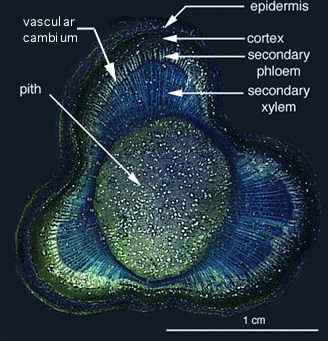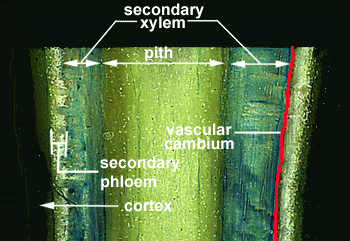|
Tomato stems exhibit secondary growth. Near the base of the stem, the secondary growth is quite obvious. Take a look at this cross section taken from an internode in one of the more mature regions of the shoot. The secondary xylem stains blue. Note that the uneven thickenings of the stem correspond to uneven secondary growth in the xylem tissue. |

|
|
Here is a longitudinal section of a similar piece of stem. The position of the vascular cambium has been marked in red, and other tissues have been labelled as well. Note how the vascular cambium is continuous up and down the length of the stem. |

|
|
If you combine the two sections and visualize the stem three-dimensionally, you can imagine that the vascular cambium is a continuous cylinder of cells, producing phloem towards the outside of the stem and xylem towards the inside. As the vascular cambium produces more cells, it migrates outward. The addition of cells in the lateral direction increases the thickness of the stem. |